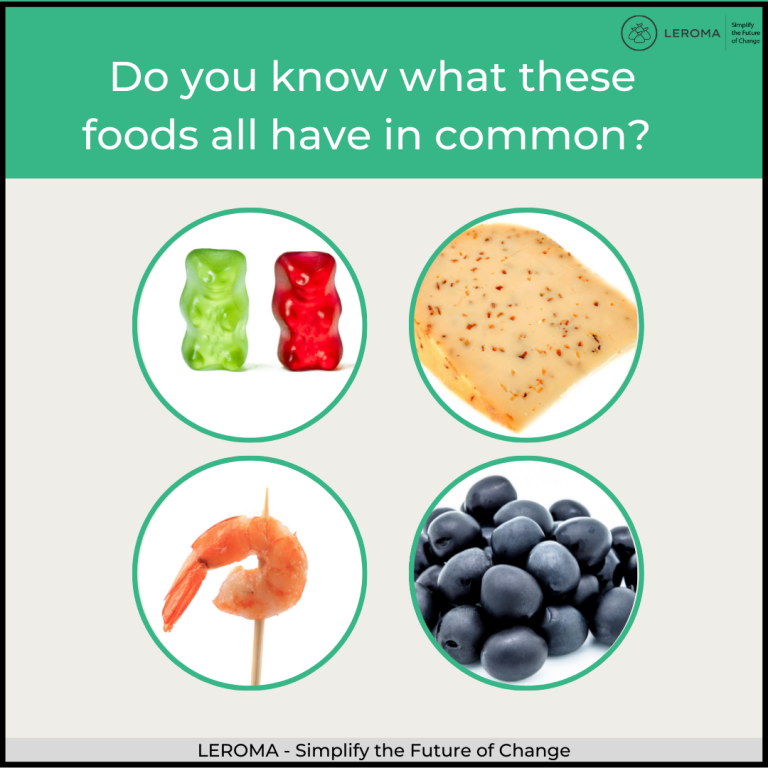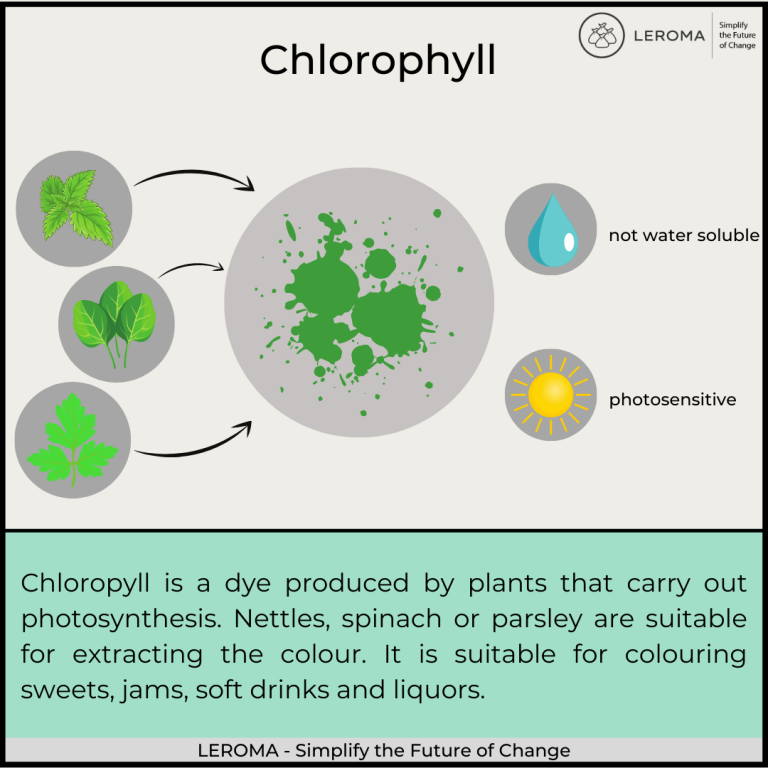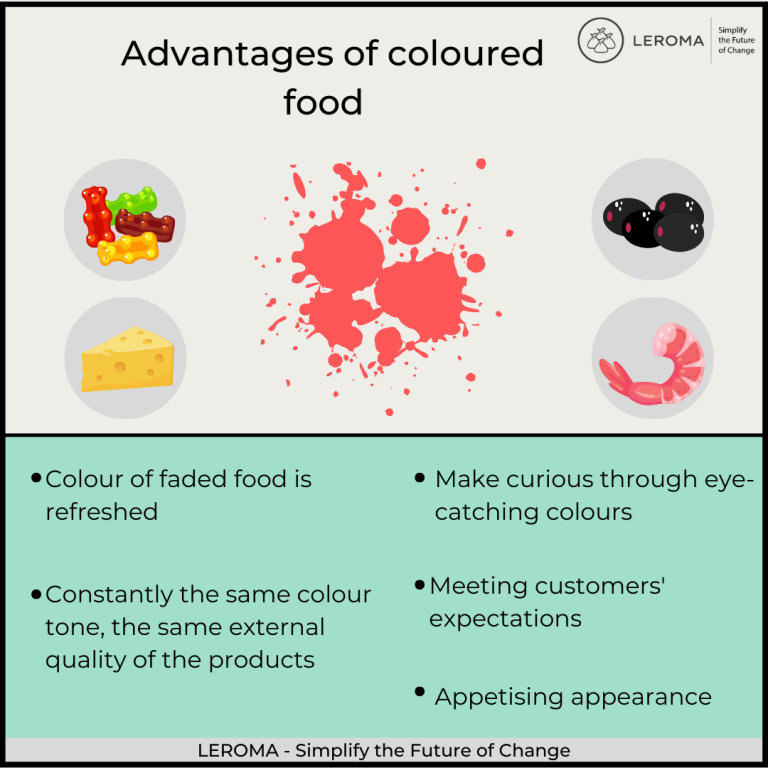Food colouring made from raw materials and recycables
In the food industry, taste has always been the most important characteristic that convinces consumers to buy a product or not. Nevertheless, a lot of emphasis is placed on attractive packaging, and in restaurants, dishes are deliberately placed on the plate in a visually appealing way. After all, appearance plays a role that should not be underestimated, because we use it to form an opinion about products even before we have tasted them. So it's no wonder that food products themselves are also optimized to look as good as possible. A very old and proven method of enhancing the aesthetics of food is colouring, which can serve various purposes. On the one hand, colourants can be used to support natural colour shades, for example in raw materials whose colour has faded during processing and/or storage. In addition, it is possible to offer products always in the same colour shade. Both applications serve to meet the expectations of consumers, who are oriented toward the colors they are used to and perceive as natural.
However, colourants can also be used to offer products in unexpected hues that stand out, thus arousing consumers' curiosity. Bright blue ice cream, toxic green cookies, black burger buns or red lemonade may not be perceived as natural, but they are perceived as exciting or original. They bring extravagance to parties and fit very well at theme parties where a particular colour is the focus. Consumers therefore buy exotically coloured foods to impress or simply to try something new and provide variety. Therefore, especially "unnatural" colours can also be a reason to buy products.
Food colourants are therefore auxiliary substances which make the treated product appear more appetizing and can promote sales. Industrial companies can make use of various types of food colourants, for example synthetic colourants that are produced artificially. These include azo dyes; which are the largest group of dyes with over 2000 compounds, but are said to have a harmful effect on health. They are considered carcinogenic, allergenic and are suspected of promoting hyperactivity and attention deficits. For this reason, it must be pointed out that foods coloured with azo dyes can impair the activity and attention of children. Accordingly, they are considered unhealthy by consumers and have a negative influence on purchasing decisions.

In addition to azo dyes, synthetic dyes also include nature-identical dyes. These have the same molecular structure as natural dyes, but are produced synthetically and are only partially or not at all derived from natural substances. For example, indigo is often reproduced synthetically because it is cheaper than obtaining the natural substance from the indigo plant or dyer's woad. The natural dyes are another category, which includes all substances of plant or animal origin.

Vegetable dyes
Probably the best known plant pigment is chlorophyll, which is produced by plants that carry out photosynthesis and is responsible for their green colour. Most often, the green pigment is extracted from nettles, spinach or parsley. Chlorophyll is sensitive to heat, so it is often stabilized with chemical processes to prevent it from turning brown during processing. In addition, the dye is not water-soluble and is sensitive to light, which is why it is often chemically modified before being used to colour foods such as candy, jam or soft drinks and liqueurs.
Another group of plant pigments are anthocyanins, which are found in the cell sap of many plants and give their flowers and fruits red, blue, violet and black colourations. Among other things, they give cherries, currants, eggplants, dark grapes, and elderberry and hibiscus flowers their characteristic colour. Anthocyanins are water-soluble and also have the special property that they can change their colour to yellow-orange depending on the acidity of their environment. Thus, they tend to be red at a low pH below 3, purple between 6 and 8, and yellow above that.
Then there are the carotenoids, fat-soluble pigments responsible for yellowish to reddish colourations of both plants and animals. They colour carrots, tomatoes, peppers and flowers as well as the plumage of birds and the chitinous shell of some insects such as ladybugs, which ingest the pigment with their food. The carotenoids are considered secondary plant compounds and have an antioxidant effect.
Animal dyes
Animal colourants include, for example, purple, which is obtained from the secretion of purple snails, or carmine, which is extracted from dried scale insects. Due to their origin, animal dyes are not used in vegetarian or vegan foods and are therefore of limited use in the food industry, as consumers are increasingly tending towards a plant-based diet and reducing their consumption of animal products.
Natural dyes such as indigo were used to dye textiles over 6,000 years ago, but have faded into the background with the development of synthetic dyes. Instead, they are often used as food colourants. Just like synthetic dyes, natural dyes are also considered additives because they come into contact with chemical solvents during extraction, for example, and must be labelled with E-numbers on the ingredients list.
For this very reason, colouring foods are an excellent alternative for companies that want to remove E-numbers from their ingredient lists in order to convince consumers of their product, who are increasingly looking at the ingredients and prefer products that contain only a few and easily understandable ingredients.
Colouring foods
Colouring foods are fruits and vegetables as well as edible plants that can be used as dyes because of their colouring properties. These include, for example, cherries, sweet potatoes, carrots, beet, spinach, turmeric, hibiscus, tomatoes, grapes, as well as spirulina, a
microalgae that can produce blue tones in textiles and foods. Unlike natural dyes, they are processed entirely without chemical processes and can be safely consumed at any stage of processing. For this reason, products coloured with beet, for example, can simply list "beet" as an ingredient, completely without an E number. In addition, colouring foods are exclusively plant-based raw materials, so they are also suitable for use in vegan products.
Colouring foods are sold, among other things, in the form of powder and are used to colour foods and beverages. When using it, recommendations regarding dosage should be followed so that the taste of the products to be coloured is not altered. For uniform colouring, it is sometimes advantageous to dissolve the powder in water, for example, before use. Colouring foods produce different shades depending on the dosage, and mixing powders can also produce new shades.

Residuals
In our text about
dyeing Easter eggs and other articles, we have already mentioned that residual materials such as walnut shells, coffee grounds and onion skins can also be used to dye eggshells or textiles, thus saving them from the trash. However, juglone, the dye found in
walnut shells, is potentially harmful if consumed, so it should not be used in food dyeing.
That doesn't mean, however, that food industry players don't have residual materials available to convert into dyes. For example, one project team wants to extract the polyphenols found in apples, which are responsible for brown coloration, to create a colouring food additive. The polyphenols are to be extracted from press residues left over from the production of apple juice, for example.
Further research into residues for colouring properties or greater use of surpluses could make the production of colourants more sustainable and even help reduce food waste. For example, producers could selectively purchase "ugly fruits"; fruits and vegetables that are already being discarded by the ton in the fields because they have visual defects.
Let’s simplify the future of change!





